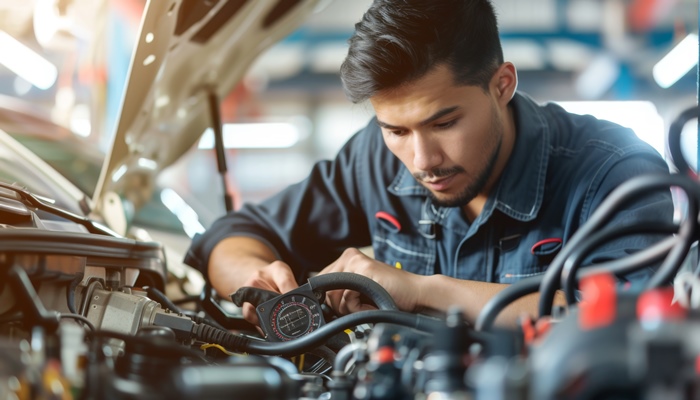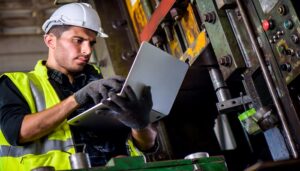Summary: Welcome to our guide, on how to improve the reliability of equipment and maintenance strategies for asset management. In this in-depth exploration we will discuss the elements of keeping operations running and optimizing performance. We will look at the connection between maintenance and reliability highlighting practices that lead to reliable outcomes.
Let’s start by understanding what maintenance is and why it is crucial for maintaining the reliability and availability of assets. From maintenance, which involves actions taken after a breakdown to proactive methods like preventive maintenance aimed at preventing failures and improving reliability we will cover a range of maintenance approaches.
The Importance of Reliability
By using examples from industries such as manufacturing processes and production lines we will show how maintenance involves activities focused on keeping equipment in top working condition. This includes managing spare parts inventory and conducting reliability assessments. The role played by maintenance teams in implementing maintenance plans.
The Role of Reliability in Asset Management
Reliability is fundamental to asset management as it refers to an asset’s ability to consistently perform its intended function reliably over time. When assets are highly reliable they demonstrate performance, with breakdowns and reduced downtime. Ensuring reliability is of importance, for companies as it guarantees operations, increased efficiency and satisfied customers.
The Connection Between Maintenance and Reliability
Maintenance and reliability are closely linked. Maintenance tasks play a role in upholding and enhancing reliability. By conducting regular maintenance activities organizations can resolve issues proactively thus preserving the reliability of their assets. Through the implementation of maintenance strategies companies can greatly boost the reliability of their equipment and systems.
Distinguishing Between Maintenance and Reliability
Maintenance and reliability are closely related but distinct concepts within the realm of asset management and industrial operations.
Defining Maintenance and Its Range
Maintenance involves a series of actions performed to maintain assets in condition and prevent failures. It covers tasks such as inspections, repairs, replacements and adjustments. Maintenance ensures that assets operate reliably as intended while extending their lifespan.
The Significance of Reliability in Asset Performance
Reliability focuses on how assets perform and consistently deliver results. It surpasses maintenance by highlighting the ability of an asset to function without interruptions. Reliability factors in uptime, availability, and predictability contribute to the efficiency and effectiveness of asset management.
The Core Elements of Maintenance and Reliability
For a maintenance and reliability framework organizations should adopt five pillars. Reliability-centered maintenance (RCM) ensures that maintenance efforts are directed towards the areas enabling organizations to allocate resources effectively.
Continuous Improvement
Continuous improvement is a process that aims to enhance maintenance and reliability practices. It involves analyzing maintenance data identifying areas, for enhancement and implementing measures. This continuous improvement approach cultivates a culture of learning and innovation empowering organizations to refine their maintenance strategies optimize asset performance and achieve heightened levels of reliability.
Implementation of Effective Maintenance Strategies
To attain maintenance and reliability levels organizations should adopt an approach and put effective strategies into practice.
Identification of Maintenance Needs and Priorities
The initial step in implementing maintenance strategies is recognizing the maintenance requirements of assets. This entails conducting asset assessments by considering factors like criticality, performance history and regulatory demands. By prioritizing maintenance efforts based on asset significance and potential risks organizations can efficiently allocate resources. Concentrate on areas needing attention.
Planning and Scheduling Maintenance Tasks
Proper planning and scheduling are crucial for the efficient execution of maintenance tasks. It is essential to plan for these tasks while factoring in aspects such as resource availability, equipment downtime and operational prerequisites. By developing maintenance schedules and optimizing resource utilization companies can reduce downtime enhance efficiency and ensure timely completion of maintenance tasks.
Utilizing Advanced Maintenance Strategies
Companies are encouraged to make use of maintenance strategies to bolster their reliability initiatives. Techniques such as vibration analysis, lubrication optimization and condition monitoring offer insights into equipment reliability. By embracing these methods companies can identify failures take proactive steps to prevent them and streamline maintenance efforts.
Incorporating Reliability Engineering in Maintenance Practices
Reliability engineering plays a role in refining maintenance strategies. It involves scrutinizing equipment performance data recognizing failure trends and implementing measures to boost reliability. By integrating reliability engineering principles into maintenance procedures companies can enhance asset performance minimize breakdowns and prolong equipment lifespan.
Ensuring Efficient Work Management
Effective work management is crucial for the execution of maintenance tasks. Companies should establish work protocols, and delineate roles and responsibilities. Establish efficient communication channels. By optimizing work management processes companies can enhance coordination efforts reduce delays significantly and ensure that maintenance assignments are carried out efficiently.
Maintenance Guidelines, for Enhanced Reliability
To achieve reliability standards businesses should embrace the following recommended maintenance practices.
Taking a Proactive Approach to Maintenance
Proactive maintenance is about preventing breakdowns before they happen. It includes checkups, preventive tasks and monitoring the condition of assets. By embracing a strategy companies can reduce downtime enhance asset performance and cut down on maintenance expenses.
Striking a Balance Between Preventive and Corrective Maintenance
While preventive maintenance is important it’s crucial for organizations to also consider measures. Corrective maintenance involves fixing failures and bringing assets back to working order. Finding the mix of corrective actions helps in optimizing maintenance costs while ensuring that assets remain reliable.
Utilizing Techniques for Monitoring Asset Conditions
Techniques like vibration analysis and thermography offer insights into asset health. By keeping an eye on asset conditions at all times organizations can spot early warning signs of wear and potential failures. This allows for maintenance interventions that minimize downtime and boost asset reliability.
Enhancing Reliability Through Root Cause Analysis
Root cause analysis (RCA) is an approach to pinpointing the reasons behind failures. By delving into failures analyzing data and identifying root causes organizations can take targeted actions to prevent issues in the future. RCA plays a role in improving asset reliability by addressing the core reasons, behind breakdowns.
Computerized Maintenance Management Systems (CMMS) play a role, in streamlining maintenance operations and offering insights into asset performance. They help organizations track maintenance activities manage work orders, schedule tasks and store maintenance data efficiently. By utilizing CMMS companies can enhance maintenance planning optimize resource allocation and improve maintenance effectiveness.
The Importance of Reliability Professionals
The Reliability professionals are players in ensuring maintenance and reliability practices.
Reliability Engineers Safeguarding Asset Reliability
Reliability engineers are tasked with analyzing asset performance identifying potential failure modes and implementing strategies to enhance reliability. They collaborate closely with maintenance teams, data analysts and other stakeholders to develop and execute maintenance plans monitor asset conditions and lead improvement efforts. These professionals play a role in maximizing asset performance reducing downtime and refining maintenance strategies.
Establishing a Reliable Team for Efficient Maintenance
Organizations looking to establish a maintenance and reliability program should form a team of reliability experts. This team could include reliability engineers, data analysts, maintenance technicians and other professionals skilled in asset management. By assembling individuals, with expertise and knowledge organizations can create a team capable of effectively tackling maintenance and reliability challenges. Continuous education and skill enhancement are crucial for reliability experts to keep abreast of industry advancements and optimal methods. Companies should allocate resources to training sessions, seminars and qualifications to boost the capabilities and know-how of their reliable staff. Through learning initiatives, companies can guarantee that their reliability professionals possess the resources and proficiency to promote maintenance and reliability excellence.
FAQ | Maintenance and Reliability
What is the difference between maintenance and reliability?
Maintenance refers to the set of activities carried out to keep assets in optimal condition and prevent their failure. Reliability, on the other hand, focuses on the performance of assets and their ability to deliver consistent results. While maintenance is a part of reliability, reliability encompasses a broader perspective, considering factors like uptime, availability, and predictability.
How does maintenance impact asset reliability?
Maintenance plays a crucial role in maintaining and improving asset reliability. Through regular maintenance activities such as inspections, servicing, and repairs, potential issues can be identified and addressed before they cause failures. By implementing effective maintenance strategies, organizations can enhance asset reliability, minimize breakdowns, and optimize performance.
What are the five pillars of maintenance and reliability?
The five pillars of maintenance and reliability are:
- Preventive Maintenance
- Work Management
- Predictive Maintenance
- Reliability-Centered Maintenance (RCM)
- Continuous Improvement
These pillars represent the key components and strategies that organizations should consider to achieve optimal maintenance and reliability.
What are the best reliability and maintenance practices?
Some best practices for reliability and maintenance include:
- Adopting a proactive maintenance approach
- Balancing preventive and corrective maintenance
- Implementing condition monitoring techniques
- Conducting root cause analysis for improved reliability
- Embracing computerized maintenance management systems (CMMS)
How does maintenance management reduce downtime?
Maintenance management reduces downtime by implementing preventive and predictive maintenance strategies. These strategies focus on identifying potential failures before they occur and taking proactive measures to prevent them. By conducting regular inspections, implementing maintenance tasks, and utilizing condition monitoring techniques, organizations can minimize unexpected breakdowns, optimize asset performance, and reduce downtime.
Image: Adobe Stock – Copyright: © MP Studio – stock.adobe.com







